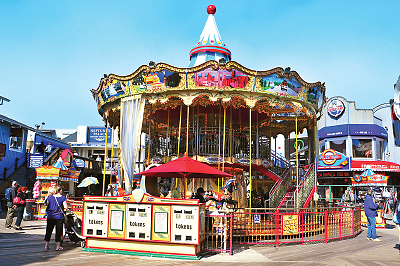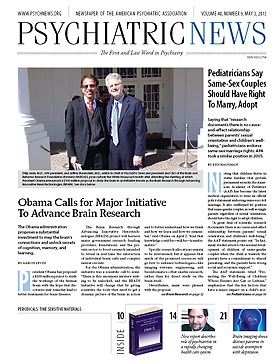San Francisco has lots of places to keep the kids happy while mom or dad is in town for APA’s annual meeting in May.
Easiest to reach is the Children’s Creativity Museum, located right above the meeting venue on the roof of Moscone South. The museum (formerly known as Zeum) provides hands-on experiences in animation, sound, and video production, live performance, and visual arts. Visitors combine their imaginations with the museum’s art and technology tools to create clay animation, make music videos, compose a soundtrack, or experiment with digital art. Plus the kids can take home their completed projects on a DVD.
Over on Pier 39 at the Embarcadero, is the San Francisco Carousel. Handcrafted in Italy, it is intricately hand painted and depicts famous San Francisco landmarks, including the Golden Gate Bridge, Coit Tower, Chinatown, Lombard Street, Alcatraz, and the popular California sea lions that hang around at the end of the pier. Kids can ride on one of the carousel’s 32 animals, including sea dragons, sea lions, dolphins, panda bears, and, of course, horses. Throughout the ride, patrons hear traditional organ music and watch the passing scene on Pier 39’s bustling promenade.
Other carousels in the city can be found in Golden Gate Park, at the San Francisco Zoo, and atop the roof of Moscone South.
Also on Pier 39, San Francisco’s Aquarium of the Bay offers an insight into that watery environment without having to get wet.
Visitors begin with an introduction to the ecosystems that support marine life in San Francisco Bay, then view displays of more than 1,000 aquatic animals. A moving walkway takes guests through two clear tunnels, 300 feet long, surrounded by 700,000 gallons of filtered bay water holding more than 20,000 bay-dwelling creatures. Other tunnels reveal the near-shore habitat with giant schools of anchovies and colorful sea stars and deeper-water creatures like bat rays, rare angel sharks, and unusual eight-foot-long, seven-gill sharks.
The final exhibit recreates the California coast. Visitors encounter a series of pools where they can touch live bat rays, leopard sharks, and tide-pool marine life. A “Behind the Scenes” tour of the aquarium is available for an additional fee.
At the Randall Museum in Corona Heights Park near the city’s center, visitors can explore nature and the environment. One exhibition, “Wild in the City,” features wildlife—including coyotes, raccoons, and skunks—with whom humans share the urban environment.
The museum also has a permanent exhibit about earthquakes, San Francisco’s emblematic municipal event. A seismograph in the exhibit is connected to a seismometer in the basement that registers earthquakes around the world in real time. Visitors can learn about plate tectonics while playing with the museum’s hands-on replica of the Hayward Fault.
In Golden Gate Park, the Children’s Playground dates from 1887, when providing a space solely for youth recreation was a groundbreaking innovation. San Franciscans call it the nation’s first public playground. The design reflects the transition of San Francisco’s natural landscape descending from hills to shore to sea. Children can climb wave walls, explore sea caves, clamber over seaside animal sculptures, slide down a hillside, and ignore their parents in a tree-house village.
New Exploratorium to Open
One major attraction for kids will be reopening in a brand new location in April, just in time for the annual meeting.
The Exploratorium is moving from its old location in the Palace of Fine Arts to Pier 15 on the Embarcadero. The new site triples the space for this “museum of science, art, and human perception.”
For instance, the Bay Observatory Gallery “erases boundaries between indoor and outdoor at the dynamic intersection where the built environment and nature meet.” In the Exploratorium’s Central Gallery, visitors investigate light and sound and how humans perceive them.
The San Francisco Cable Car Barn, Powerhouse, and Museum on Nob Hill gives visitors a peek into the history and workings of the city’s iconic symbol. Three antique cable cars are on display, including the very first, placed into service in 1873. Visitors can view the cable-winding machinery that operates the system, as well as the path of the cable entering the building and leaving underneath the street in the sheave room.
The best way to get to the Powerhouse is (how else?) by cable car.
Of course, there’s always the zoo. The San Francisco Zoo is located next to the Pacific Ocean and houses 250 species ranging from insects to giraffes. Five botanical exhibits round out the collection. ■

